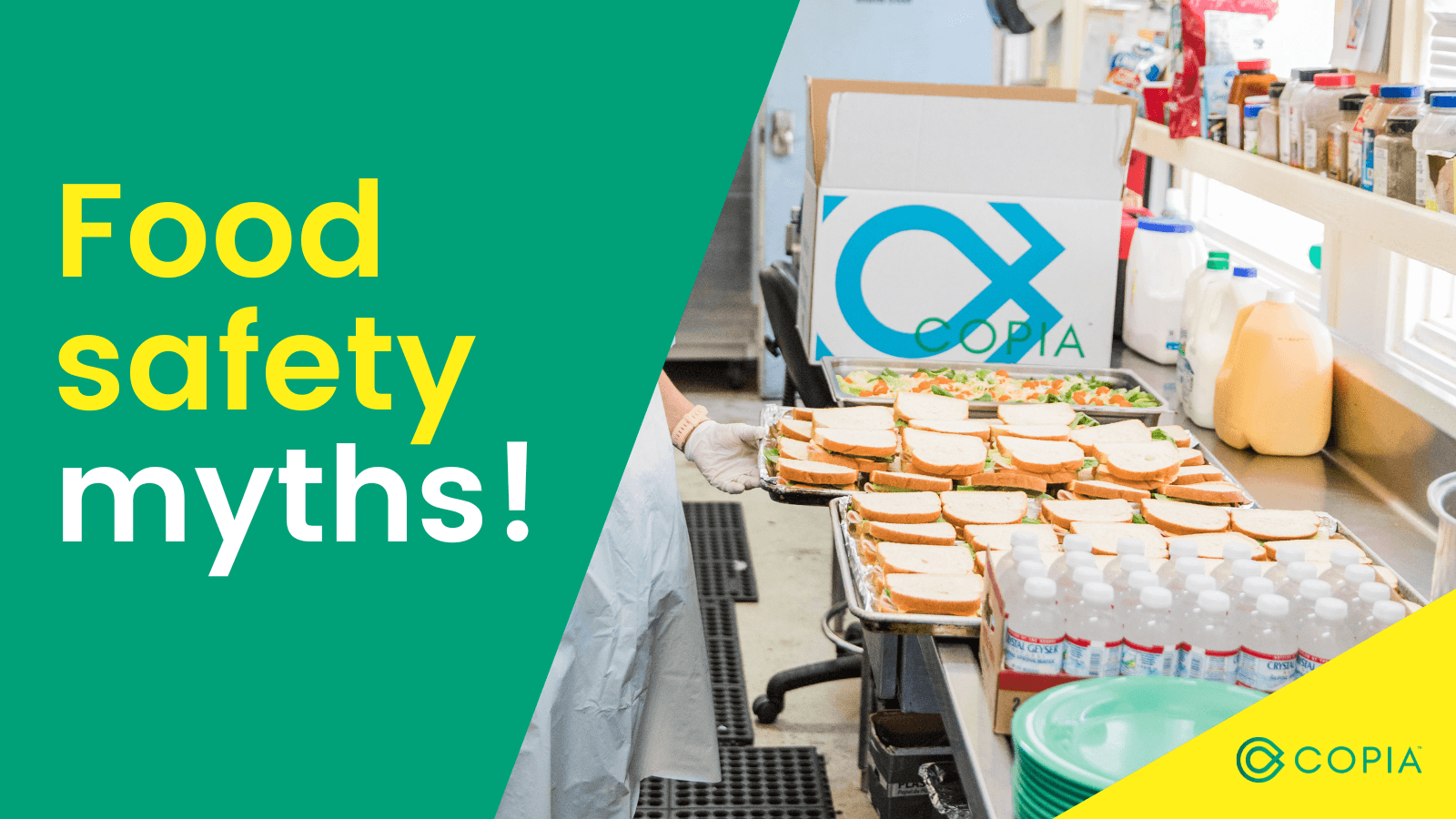Food Safety Myths: Fact vs. Fiction

Food safety is an important aspect of food rescue and crucial to ensuring that food is delivered with dignity to our neighbors in need. Copia recently created a Food Safety Council dedicated to staying on top of the latest food safety guidelines and being a helpful food safety resource for our food donors and nonprofit partners.
We dug into 6 common food safety myths to reveal the truth!
Myth: You shouldn’t put hot food in the refrigerator.
Fact: The USDA says that hot food can be placed directly in the refrigerator. However, suppose you have large batches of items, such as soups and stews. In that case, you should divide it into smaller portions before refrigerating to ensure that food cools to a safe temperature fast enough to avoid bacteria growth.
Source: USDA: Refrigeration & Food Safety
Myth: Frozen food cannot be safely refrozen after thawing.
Fact: If thawed in the refrigerator, frozen foods (including prepared food) can be refrozen without cooking, although there may be some loss of quality due to the moisture lost from thawing. If an entire portion of food is thawed, but only a small amount is needed, it is safe to thaw in the refrigerator to separate and refreeze the excess without reheating as long as the food was thawed in the refrigerator.
Source: USDA: Freezing & Food Safety
Myth: Frozen food goes bad eventually.
Fact: Frozen food will remain safe indefinitely. However, in order to preserve quality, it’s best to seal food tightly in airtight freezer bags or storage containers. If you notice freezer burn, remove those sections and the food is still safe for consumption.
Source: USDA: Freezing & Food Safety
Myth: Leftovers are okay to eat as long as they look and smell okay.
Fact: While you should always assess the overall condition of the food before using it, bacteria can grow on food without affecting the scent or appearance. For this reason, refrigerated leftovers should be thrown out after 3-4 days.
Source: Leftovers & Food Safety
Myth: Food poisoning is caused by the last meal eaten prior to illness
Fact: Symptoms from foodborne illness can begin anywhere from several hours or up to several weeks after eating a contaminated meal.
Source: USDA Foodborne Illness & Disease , Washington State Dept of Health
Myth: Microwaving food will automatically kill bacteria, making reheated food safe for consumption
Fact: Heating food to the proper temperature, as opposed to the act of microwaving, is what brings food to a safe temperature for consumption. For this reason, you should still check the temperature of microwaved food to ensure a safe internal temperature is reached.
Source: USDA Cooking with Microwave Ovens, Partnership For Food Safety Education
Did any of these food safety myths surprise you? If so, you’re not alone! Oftentimes, confusion around food safety can lead to unnecessary food waste. Knowing how to handle and prepare food safely is an important step to reducing food waste while protecting both yourself and your community!
